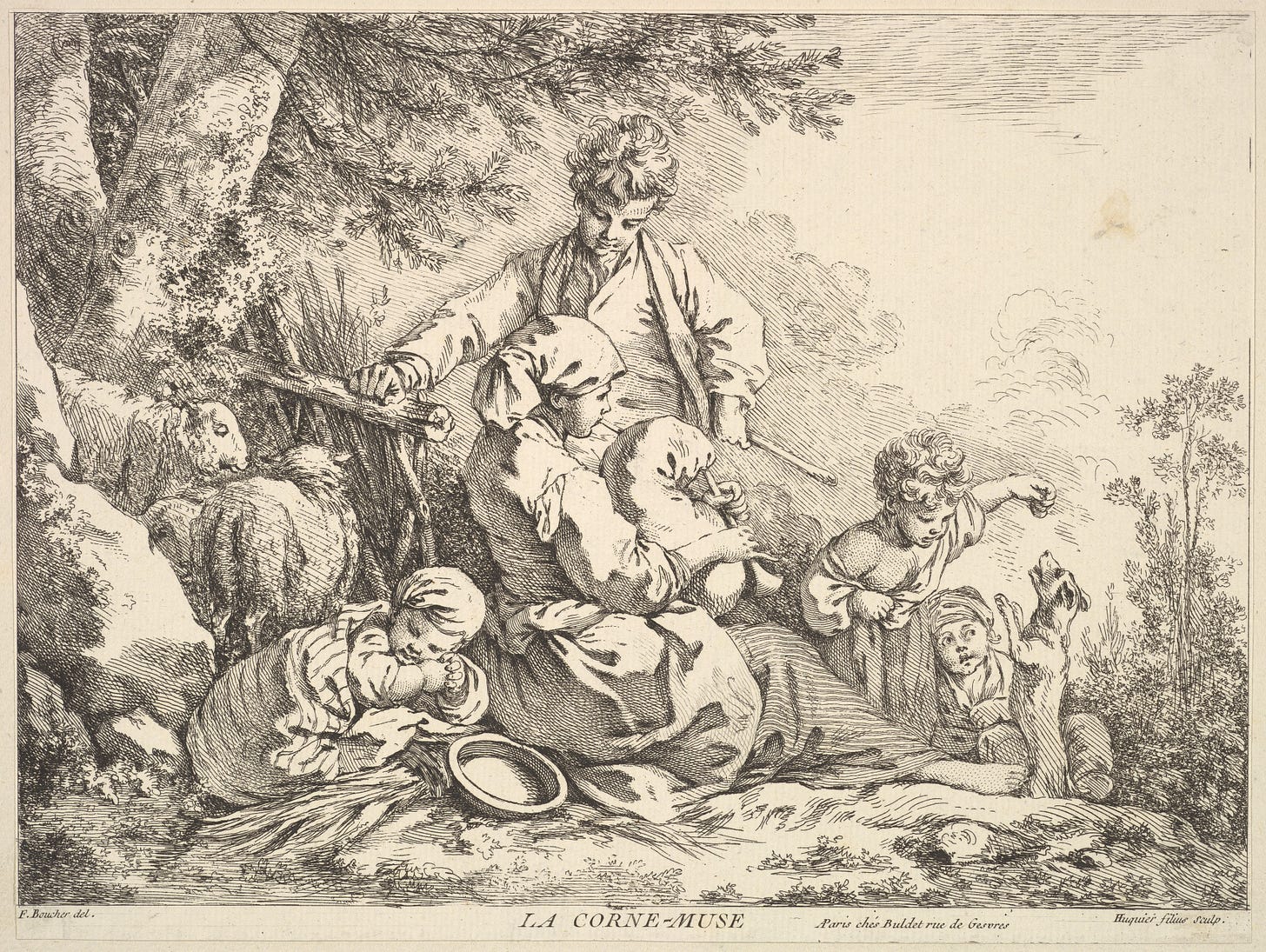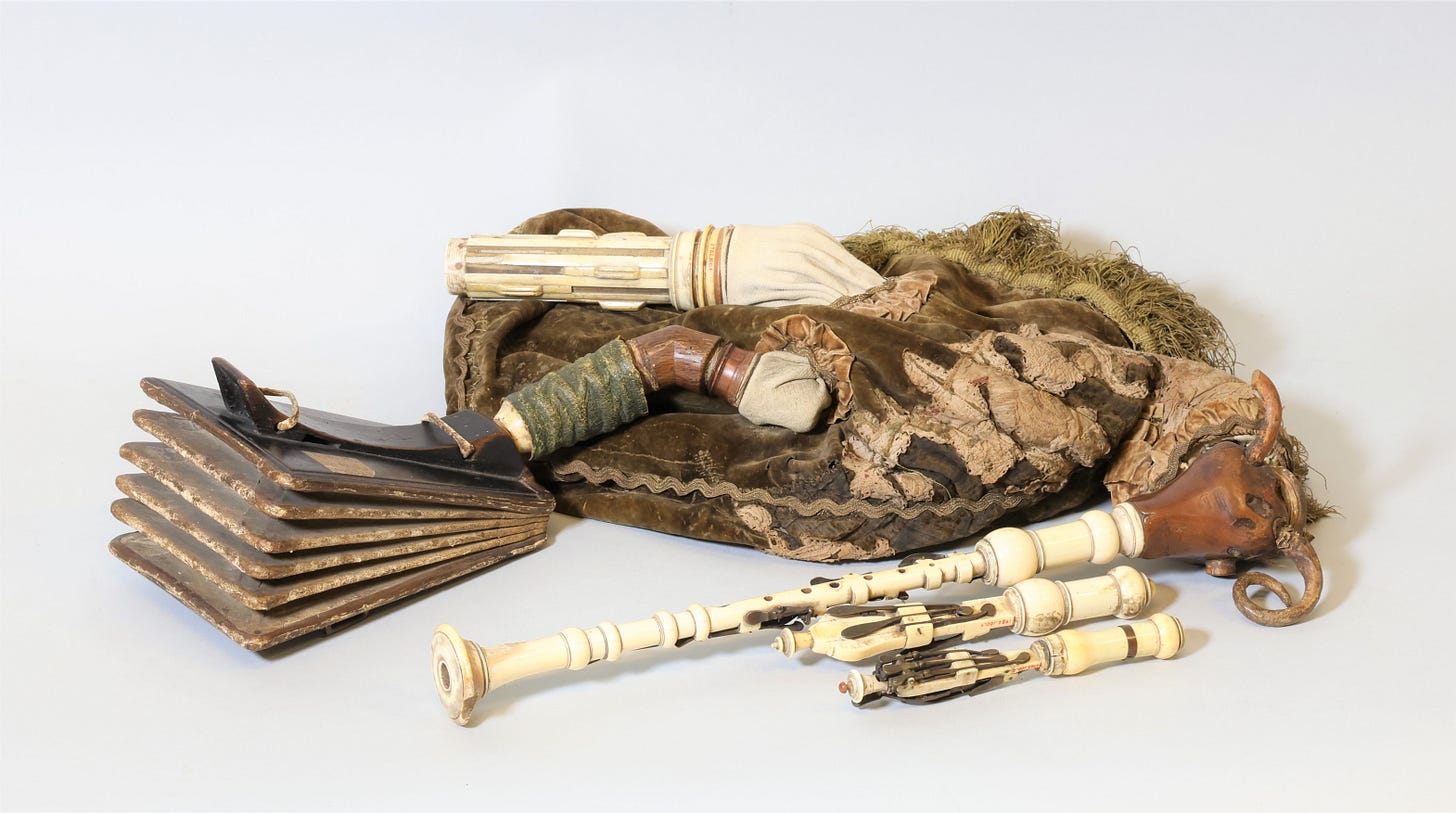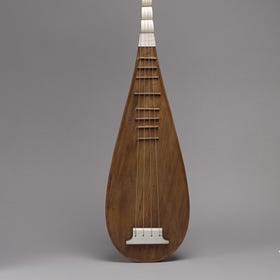
While the bagpipes are closely associated with Scotland today, there are many varieties across Europe as well as North Africa and India. Mentioned in many texts from Greek plays to Chaucer, their history is documented across many cultures.
History
The bagpipe’s early origins are a little foggy and debated by some, but one possibility is they originated in Sumer, from where they then spread to Persia, Greece, and Rome. There are early records of bagpipes in Egypt from 400 BC and they are even mentioned on a Hittite slab from the ruins of Eyuk dating to 1,000 BC. Once they were introduced to Europe, they diffused across the continent to Spain, Poland, and Hungary, among other regions as well. As for finding their home in Scotland, it’s believed they were introduced there by invading Romans.

Once in Scotland, bagpipes took on a new role. They began to lead soldiers in battle, as recorded in 1547, when pipers rallied Highlanders at the Battle of Pinkie. In 1746, after the Battle of Culloden and the defeat of Bonnie Prince Charlie, the English government outlawed bagpipes. Since they were popular in battle to inspire troops, England classified them as weapons of war. This law was repealed in 1785.
The Bagpipes
The first pipes simply consisted of a bag such as an animal skin, a chanter (the pipe with finger holes that plays the melody), and one drone. Sometime in the 15th century a second drone was added followed by a third in the 16th century. For the Scottish Highland pipes, the largest drone is named the Great drone and the two smaller ones are called tenor drones. Bagpipes typically have a range of an octave and a half.

To play the bagpipes, the player’s breath is blown through the blowpipe to inflate the bag, then the left arm is used to deflate the bag, pushing air through the chanter and drones. As the air flows through the chanter, the player uses the finger holes to play the melody. A leather flap inside the bag allows air to flow in, but prevents it from flowing back out the pipe. Reeds in the chanter and drone pipes similar to those used in woodwind instruments like the clarinet give the bagpipes their distinctive sound.
In some bagpipes, bellows are used under the right arm instead of the player’s breath to inflate the bag, as in the Irish Uilleann or French musette pipes (see photo above). The Irish Uilleann pipes have regulators, an additional set of pipes the player can use to allow for more chord voices.
The Sound
Below is the Kaynak Pipers Band from Bulgaria. The video is of their whole performance, and it’s all worth a listen.
Here is Jerry O’Sullivan playing “Craig’s Pipes”.
Here’s a bonus video! This one from UNESCO gives a great look at the Uilleann pipes and a little of its history.
If you enjoyed this look into the bagpipes, I’d love to hear your thoughts in the comments below.
Sources:
Bagpipe. Iowa State University, Department of Music and Theatre, Musica Antiqua, https://www.music.iastate.edu/antiqua/instrument/bagpipe.
Johnson, Ben. The Piob Mhor, or the Great Highland Bagpipes. Historic UK, https://www.historic-uk.com/HistoryUK/HistoryofScotland/The-Piob-Mhor-or-the-Great-Highland-Bagpipes/.\
White, John. Bagpipe History. Henderson’s, https://www.hendersongroupltd.com/resources/history-of-bagpipes/.
Worrall, Robert. The Evolution of the Great Highland Bagpipe. Henderson’s, https://www.hendersongroupltd.com/resources/history-of-bagpipes/.
Thank you for reading and supporting this newsletter. The best way to show support is by liking and sharing. If you would like to read more here is a link to the seventh edition of Instrumental Archaeology.
Instrumental Archaeology, Issue 7
Throughout the centuries, merchants and travelers brought with them many valuable objects and ideas along the Silk Road. Among these items were instruments that would become the pipa.





Fascinating! I grew up in Scotland & have always loved the sound of the bagpipes. Such an interesting history, thank you!
Loved this and shared with several musician friends!